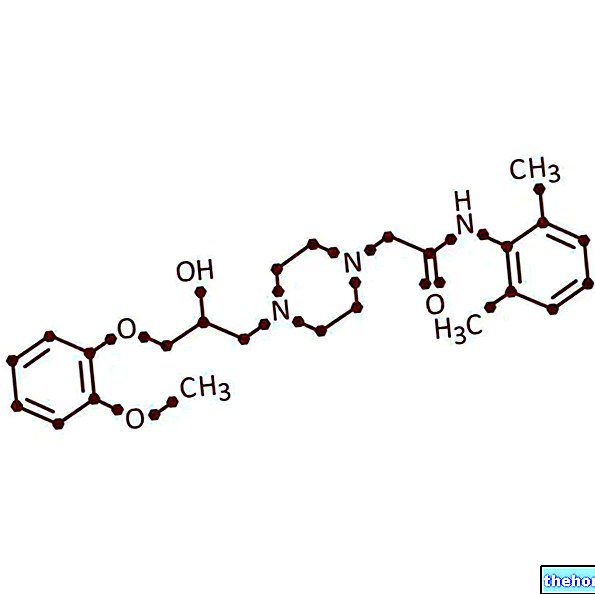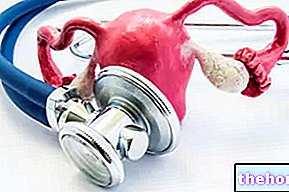VALPINAX ® is a drug based on octatropine methylbromide + diazepam
THERAPEUTIC GROUP: spasmolytics.

Indications VALPINAX ® Octatropine methylbromide + diazepam
VALPINAX ® is indicated in the symptomatic treatment of painful spastic manifestations of the gastrointestinal tract, especially if determined by an anxious component.
VALPINAX ® is also indicated in case of psychomotor agitation, delirium tremens, withdrawal symptoms and irritable bowel syndrome.
Mechanism of action VALPINAX ® Octatropine methylbromide + diazepam
The particular therapeutic indications of VALPINAX ® are due to the combination of two active ingredients particularly effective in counteracting both the spastic contraction of the gastro-intestinal muscles and the anxious disorders of the emotional sphere.
More precisely:
- The octatropine methylbromide, derivative of atropine, acts selectively at the level of the smooth muscle cells of the gastrointestinal tract, competing with acetylcholine for binding to muscarinic receptors, and thus reducing the state of excitation and subsequent contraction of these cells.
- Diazepam, belonging to the benzodiazepine group, is able to act at the level of the central nervous system, improving the affinity of some nerve receptors to GABA. This neurotransmitter, with marked inhibitory and hyperpolarizing activities, is able to guarantee a sedative effect and anxiolytic.
This combination guarantees an integrated therapeutic approach for all those spastic-painful manifestations of the gastrointestinal tract linked to emotional disturbances.
Studies carried out and clinical efficacy
1. VALPINAX AND IRRITABLE COLON SYNDROME
2010 Mar; 14: 155-62. Octatropine methyl bromide and diazepam combination (Valpinax) in patients with irritable bowel syndrome: a multicentre, randomized, placebo-controlled trial.
Pace F, Maurano A, Ciacci C, Savarino V, Attili A, Iaquinto G, Magni E, Porro GB
This Italian study, conducted on 186 patients between 18 and 65 years old, suffering from irritable bowel syndrome, shows how taking VALPINAX at therapeutic doses can lead to a significant improvement in the painful symptoms of the gastrointestinal tract. Side reactions, weak entities, were recorded in 15% of patients undergoing therapy.
2. OCTATROPINE BUTYLBROMIDE IN THE TREATMENT OF DUODENAL ULCER
Scand J Gastroenterol Suppl. 1989; 167: 65-7.
Octatropine-methyl-bromide and sulglycotide salt in the short-term treatment of active duodenal ulcer. A double blind endoscopic study of 40 outpatients. Dobrilla G, Valentini M, Bonoldi MC, Piazzi L.
Italian study conducted on 40 patients suffering from duodenal ulcers (confirmed by endoscopy), which highlights the particular efficacy of octatropine methylbromide in reducing ulcer-induced pain.
3. BENZODIAZEPINES AND IRRITABLE COLON SYNDROME
Clin Drug Investig. 2007; 27: 15-33.
Irritable bowel syndrome.A Spinelli.
This important meta-analysis study shows how the association of benzodiazepines, such as diazepam, with classic anticholinergics, with muscle relaxant activity, can guarantee a complete therapeutic approach to irritable bowel syndrome, improving not only intestinal pain and prominent diarrhea, but also the anxious state partly responsible for the pain symptoms.
Method of use and dosage
VALPINAX ® tablets (octatropine methylbromide 40mg + diazepam 2.5mg): 1-2 tablets a day are recommended.
VALPINAX ® oral drops 4%: it is recommended to take 25/30 drops twice a day.
The dosage for elderly people must necessarily be established by your doctor.
Warnings VALPINAX ® Octatropine methylbromide + diazepam
The presence of psychotropic substances in VALPINAX ® could cause:
- onset of unpredictable individual reactions following the simultaneous consumption of alcohol;
- dependence and related withdrawal syndrome with psycho-physical symptoms, following prolonged administration over time and subsequent interruption;
- changes in liver function and blood chemistry;
For this reason it is always necessary to take VALPINAX ® under strict medical supervision, paying particular attention in the case of elderly, debilitated patients suffering from hepatic and renal dysfunction, cardiovascular insufficiency and diseases of the nervous system.
The presence of anticholinergics in VALPINAX ® could cause:
- episodes of gastroesophageal reflux, particularly intense for those chronically suffering from this condition;
- worsening of respiratory capacity following a reduction in bronchial secretions;
- the onset of tremor, irritability and agitation, with rare convulsive phenomena in particular predisposed subjects, when taken at high doses;
- cause addiction and dependence.
Consequently, it is necessary to use VALPINAX ® with caution, and under strict medical supervision, in case of diseases of the autonomic nervous system, liver and / or kidney diseases, chronic obstructive inflammatory diseases of the respiratory system, hyperthyroidism, coronary heart disease , in congestive heart failure, cardiac arrhythmias, hypertension and, especially in children, in the presence of hyperpyrexia.
The simultaneous presence of anticholinergics and benzodiazepines could significantly affect the ability to concentrate and attention, making driving or using particular tools and machinery unpredictable and dangerous.
PREGNANCY AND BREASTFEEDING
We do not recommend the use of VALPINAX ® during the first trimester of pregnancy, while in the following period medical advice is essential.
Interactions VALPINAX ® Octatropine methylbromide + diazepam
Given the presence of anticholinergics, VALPINAX ® can interact with:
- Tricyclic antidepressants, accentuating their effect.
- Anticholinergics of various kinds, enhancing their effects;
- Antihistamines, capable of interfering with the normal functioning of the drug;
- Parasipathomimetic agents, which cancel their therapeutic effect.
The sedative effects induced by diazepam can be enhanced by neuroleptics, tranquilizers, antidepressants, hypnotics, analgesics, anesthetics and antihistamines.
Contraindications VALPINAX ® Octatropine methylbromide + diazepam
VALPINAX ® is contraindicated in debilitated, elderly patients with prostatic hypertrophy, glaucoma, urinary retention syndromes or intestinal obstruction (pyloric stenosis), paralytic ileus, ulcerative colitis, megacolon, reflux oesophagitis, myasthenia gravis, cardiovascular disease, ulcerative colitis, hypensitivity towards one of the product components.
Undesirable effects VALPINAX ® Octatropine methylbromide + diazepam
Unbalanced doses of VALPINAX ® can cause side effects due to an exaggerated sedating effect such as:
- Drowsiness
- Sense of fatigue and muscle weakness
- Dizziness.
More rare are symptoms such as:
- Depression
- Ataxia
- Confusion
- Hypotension
- Urinary incontinence
- tremor
- skin rashes.
The presence of anticholinergics in VALPINAX ® could also cause dryness of the oral cavity, accommodation disorders, photophobia, gastro-intestinal disorders, headaches.
Note
Notes: the drug VALPINAX ® Octatropine methylbromide + diazepam can only be purchased upon presentation of a medical prescription.
The information on VALPINAX ® Octatropine methylbromide + diazepam published on this page may be out of date or incomplete. For a correct use of this information, see the Disclaimer and useful information page.




























